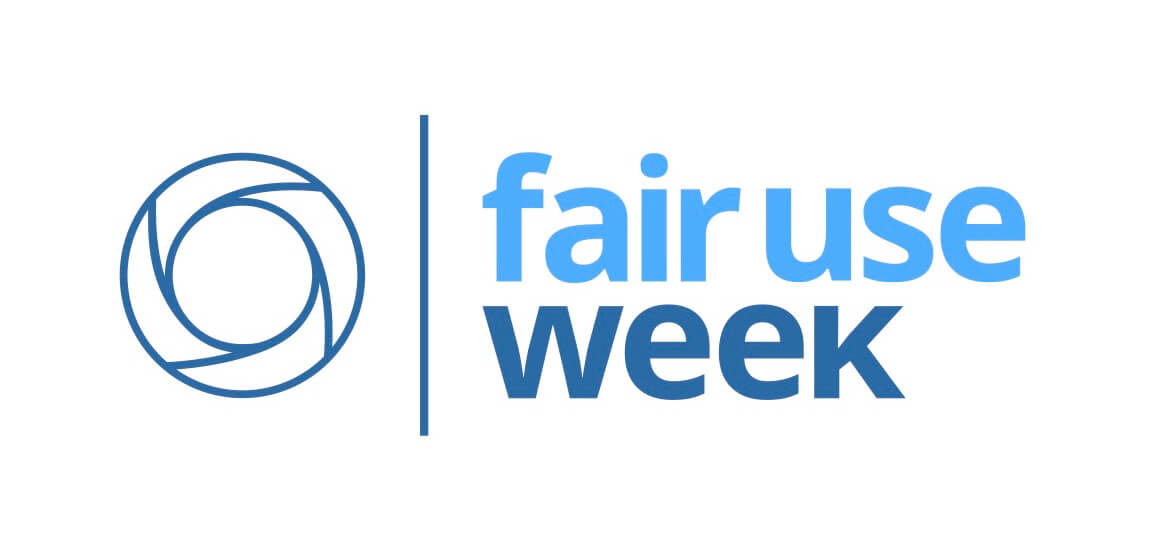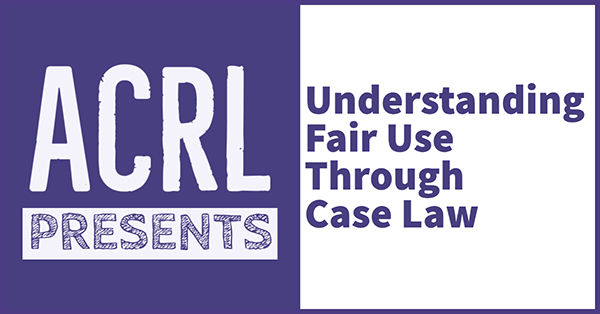Welcome to Fair Use / Fair Dealing Week (Monday, February 24 – Friday, February 28). This week is an annual event devoted to the doctrines of fair use and fair dealing, important components of  scholarly research. From the Association of Research Libraries:
scholarly research. From the Association of Research Libraries:
Fair use and fair dealing are essential limitations and exceptions to copyright, allowing the use of copyrighted materials without permission from the copyright holder under certain circumstances.
Fair use and fair dealing are flexible doctrines, allowing copyright to adapt to new technologies. These doctrines facilitate balance in copyright law, promoting further progress and accommodating freedom of speech and expression.
While fair use and fair dealing are employed on a daily basis by students, faculty, librarians, journalists, and all users of copyrighted material, Fair Use/Fair Dealing Week is a time to promote and discuss the opportunities presented, celebrate successful stories, and explain the doctrines.
What is Fair Use?
Section 107 of the U.S. Copyright Act (Limitations on exclusive rights: Fair use) provides four factors in determining fair use as you balance your needs with that of the copyright holder:
In determining whether the use made of a work in any particular case is a fair use the factors to be considered shall include—
(1) the purpose and character of the use, including whether such use is of a commercial nature or is for nonprofit educational purposes;
(2) the nature of the copyrighted work;
(3) the amount and substantiality of the portion used in relation to the copyrighted work as a whole; and
(4) the effect of the use upon the potential market for or value of the copyrighted work.
The fact that a work is unpublished shall not itself bar a finding of fair use if such finding is made upon consideration of all the above factors.
Determining Fair Use
CUA students, faculty, staff, and librarians should be aware of the concept of fair use and its many applications to creating, building, and writing original works. There are a number of sites that can walk a person through the quagmire of determining fair use:
Fair Use Evaluator: https://librarycopyright.net/resources/fairuse/index.php
The Scholarly Communications & Copyright Office at the Penn State Libraries has a checklist for balancing the pros and cons of fair use.
The Copyright Advisory Services at the Columbia University Libraries has a roadmap for determining fair use.
How one obtains permission from an author to use a copyrighted work can be daunting. The Library of Congress has provided a handout to address some concerns. Also, there is a great post on knowing when to use a copyrighted work.
Fair Use and Open Educational Resources (OER)
Open Educational Resources (OER) is a growing trend in education. Students can save money by using open access textbooks and faculty can create books for courses using OER. Consequently, having a solid grasp of fair use practices is essential for conforming to the law. One way to evaluate whether something is fair use or not is to use the Fair Use Evaluator mentioned above. The evaluator will walk the instructor through the process and provide an explanation at the end. This explanation can be put in the OER to notify everyone that a fair use evaluation took place. For background information on OER, check out our recent blog posts here and here.

Association of College & Research Libraries webinar
The U.S. Copyright Office has an index that follows judicial decisions on fair use. ACRL is offering a free webcast celebrating Fair Use/Fair Dealing Week. Join the webinar on Tuesday, February 25, at 2:00 pm EST, for “Understanding Fair Use Through Case Law,” presented by Sandra Aya Enimil, Assistant Professor and Copyright Services Librarian, and Maria Scheid, Copyright Services Coordinator, both at The Ohio State University.
Resources
Fair Use Fundamentals Infographic.
How Fair Use Helps In Saving Software Infographic.
Fair Use Week on Twitter.
Fair Use Week blog.
